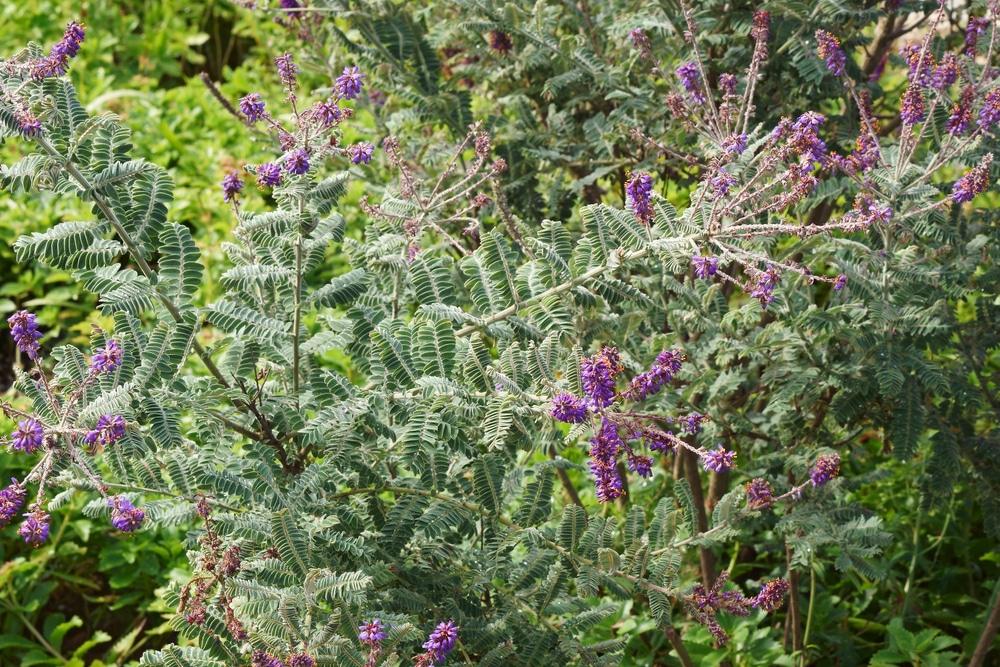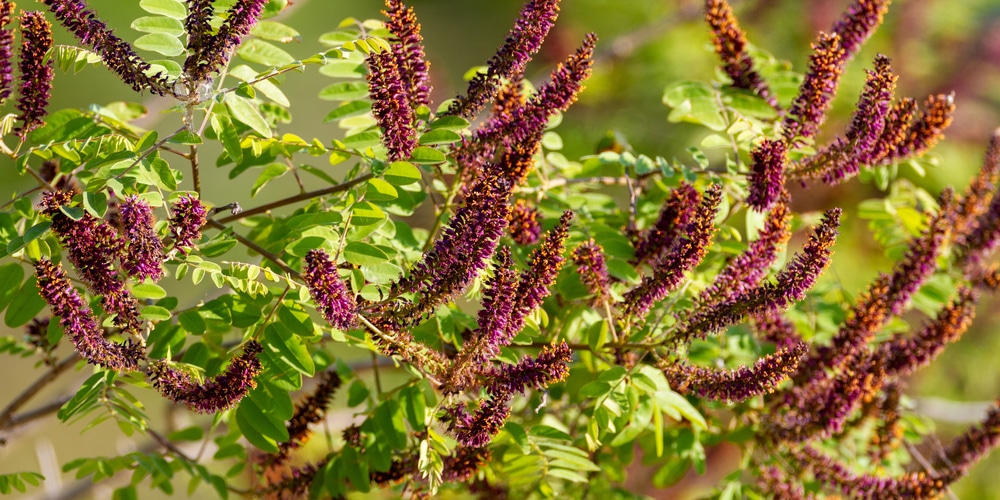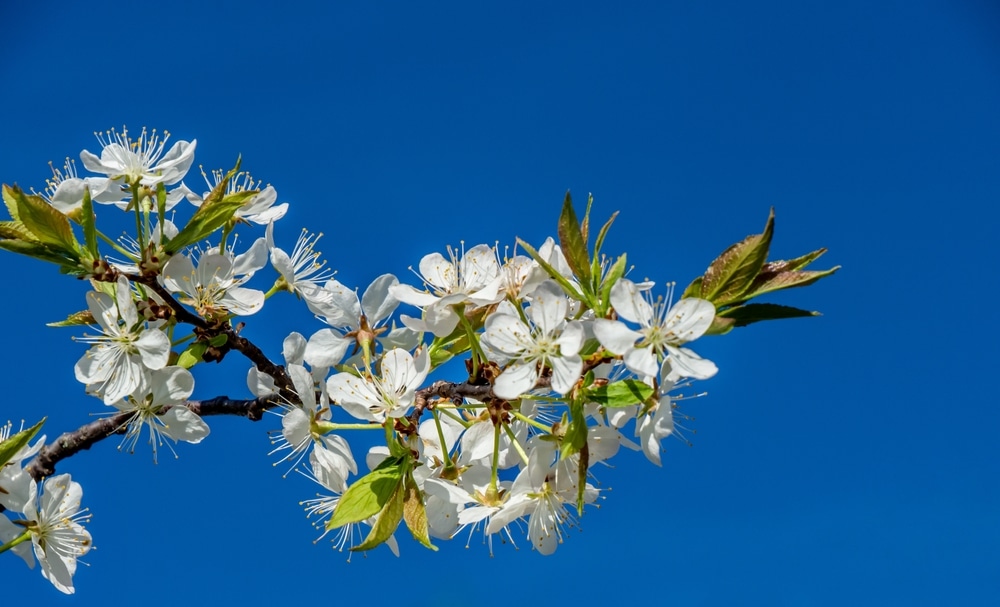Nebraska has an abundance of trees, flowers, plants, bushes, and shrub species. However, due to the history of North America, there is an influx of new plant and animal species that are constantly shifting. The movement of plants and animals over multiple generations makes it a bit challenging to determine what is truly native.
It’s also important to note that Nebraska native bushes could fall into two categories. Bushes are a synonym for shrubs, but there are also shrubby trees that could qualify as Nebraska native bushes.
The amounts of bushes, shrubs, and shrubby trees native to Nebraska is extensive, but here is an overview of some of the ones you are most likely to see.
Nebraska Native Bushes Qualifying As Shrubs
Leadplant
The leadplant is a type of pea or bean plant which is technically called a legume plant. It is a Nebraska native bush, but it is also native to several states across the midwest, covering everywhere from Nebraska to Missouri and Texas to central Canada.
Some people treat them as pesky shrubs that sprout up and need to be controlled, but they often grow in between corn crop yields and have a beautiful purple flowering. It’s desirable that they grow between crops because the bacteria on their roots help to replenish the soil. They also have a pleasant lavender-like smell, and due to their spikes, most animals such as deer will avoid them.
False Indigo (Indigo-Bush)
The false indigo is another legume plant that has some pretty flowers sprout up. The flower is a bit smaller than the leadplant, but they are still beautiful in their own right. This plant corners the market as a fraud because its nicknames will vary from false indigo bush, desert false indigo, and the bastard indigo bush. The false indigo is native to Nebraska, but it is also common across the entirety of the United States, northern Mexico, and Southeast Canada.
Because false indigo is so common in North America, we might consider it a pest. Still, it’s pretty enough to have been popularized as an ornamental household plant in parts of Europe and Asia. It has even been claimed that false indigo has therapeutic properties. The false indigo can even be found across Europe and Asia wildly, but it’s suspected that these were garden escapes similar to bamboo found in North America.
Beyond those two aromatic purple flowering Nebraska bushes, the list goes on:
- Amorpha Nana: Dwarf Indigo
- Artemisia Cana: Silver Sagebrush
- Artemisia Filifolia: Sand Sagebrush
- Artemisia Frigida: Fringed Sagebrush
- Artemisia Tridentata: Big Sagebrush
- Atriplex Canescens: Four-wing Saltbush
- Cercocarpus Montanus: Mountain Mahogany
- Chrysothamnus Nauseosus: Rabbit Brush
- Chrysothamnus Parryi: Parry Rabbit Brush
- Ceanothus Americanus: New Jersey Tea
- Ceanothus Herbaceous: Inland Ceanothus
- Cephalanthus Occidentalis: Button Bush
Nebraska Native Bushes Qualifying As Trees
Beyond the typical shrubs, there are also shrubby trees which are still technically bushes. However, they can be significantly taller, making them suitable for privacy in residential areas where you might not be able to get a permit for a fence.
American Wild Plum
The American wild plum could serve as a privacy row, but it’s just a beautiful bit of green foliage that grows to about five and even eight feet tall. It’s a very dense bush and is truly native to Nebraska, but it can be adapted to various climate and soil conditions.
While the flowerings on the American wild plum are white, it’s called the wild plum for a reason. And you guessed it, the plums that grow at the end of summer are purple and occasionally red. Those plums make phenomenal jelly, but you should be aware that this attractive Nebraska native bush will also attract all kinds of life, including deer, rabbits, and even some problematic caterpillars.
Some other shrubby trees that are worthy of listing include the following:
- Amelanchier Arborea: Juneberry
- Prunus Mexicana: Mexican Plum
- Prunus Virginiana: Choke Cherry
- Salix Eriocephala: Black Willow
- Viburnum Lentago: Nannyberry Viburnum
Conclusion
Remember that while a plant is native and common, it is undoubtedly remarkable. Each Nebraska native bush has a unique impact, whether it’s on the soil, serves as a windbreak, and can even facilitate an entire ecosystem. So be sure to appreciate your Nebraska native bushes.


